Anyone who’s ever been on a canoe trip knows that the seats can get pretty uncomfortable after a few hours of even the most casual paddling. so How to Make a Canoe Seat More Comfortable Luckily, we can do a couple of things to help alleviate this pain in the bum.
In this article, we’ll give you some tips on making your canoe seats more comfortable, and, as a bonus, we’ll give you a couple of recommendations on canoes with the coziest seats.
Table of Contents
Causes of Discomfort When Sitting in Canoe
Initially, canoe seats are relatively comfortable as any other. However, it can get pretty discomfiting after a couple of hours, especially in turbulent waters.
The human body was not designed to sit in the same position for extended periods.
That’s why when you sit in a canoe, your weight starts to put pressure on the nerves and blood vessels in your buttocks, legs, and backs, especially if you paddle in a kneeling position.
This extended pressure can lead to numbness, tingling, and even pain.
Furthermore, the pressure is exacerbated by the canoe seat’s hard surface. The harder the surface, the quicker the numbness and pain sets in.
In some canoes, inadequate legroom can also cause discomfort. A canoe full of gear, for example, may leave you with very little room to move your feet around in.
Even with cushioned seat with plenty of space to move your feet around, you may still experience discomfort in a canoe if you’re not paddling correctly.
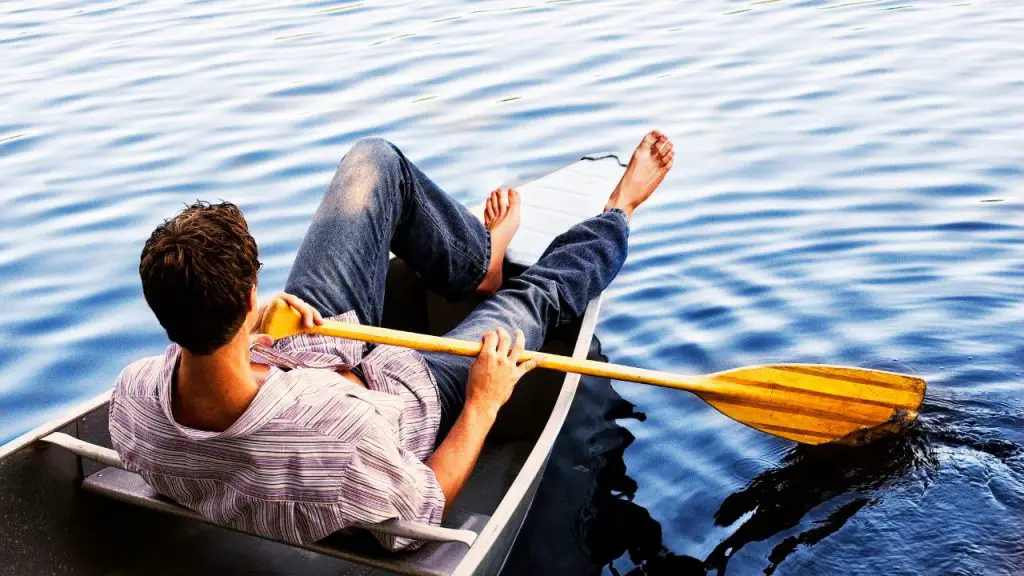
Paddlers have perfected in various positions and have done so with performance and comfort in mind.
So if you’re planning a canoe trip, take plenty of breaks and stretch your legs often. And if you start to feel discomfort, don’t hesitate to stand up and move around for a bit. Your body will thank you for it.
How to Make a Canoe Seat More Comfortable
While canoe seats are typically built-in, this doesn’t necessarily mean that you’ll have to live with a sore back every time you’re out on the water.
From adding some cushion to outright changing the canoe seat assembly, there are plenty of ways to make a canoe seat more comfortable.
Choosing the Right Canoe Seat For You
Making yourself more comfortable starts with choosing the right canoe seat for you.
This is a crucial feature because comfort is subjective to the paddler. Therefore, what one paddler finds comfortable may not necessarily apply to another.
Dimensions – One of the most critical aspects of finding the right canoe seat for you is to find one with the correct dimensions. Find one that’s not too big or too small for your backside.
One that’s too big can make for an inefficient paddling experience, whereas one that’s too small can put pressure on parts of your leg that could lead to numbness and pain.
Padding – The padding is an essential feature of a canoe seat. And it can be quite complicated. One that’s too soft won’t provide you with the support you need for your back and buttocks.
Cushions that are too stiff, on the other hand, elevate your center of gravity, making for an unstable paddling experience.
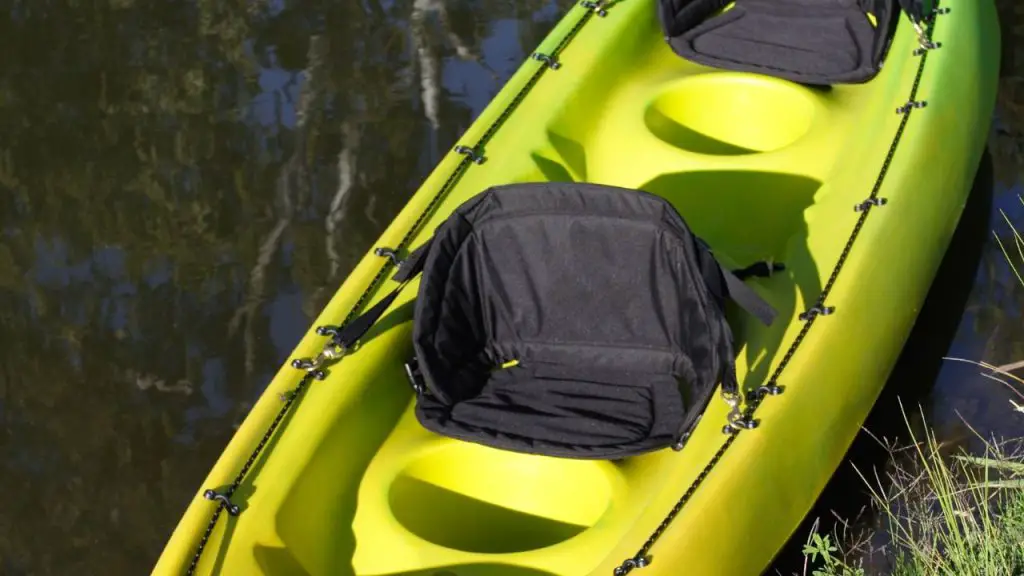
Choose a seat with a cushion that’s just right for your weight and achieves the delicate balance between stability and comfort.
Seatbacks and Backrest – Many canoe seats also include backrests and seatbacks for additional back support. These features add much value to a paddler’s comfort during long sessions.
However, canoe seats with backrests tend to be heavier, so consider it when shopping around.
Mounting – Some canoe seats can be placed on top of the existing ones. They often have silicone or rubber bottoms to avoid skidding across the canoe’s surface.
Others need to be strapped onto the canoe to prevent slippage. Generally, strapped seats are quite a bit heavier but are more stable.
Extra Features – Some canoe seats also include added features such as beverage holders, flotation mechanisms, and adjustability. Choose one that will give you the most utility and joy in your canoeing trip.
Upgrade the Old Seats
One of the best things about canoes is that the parts are typically upgradeable. Outboard motors are usually the first improvement people make, but canoe seats are no exception.
Canoe seats can be upgraded to provide more comfort and support, making a big difference on long trips.
In many canoe models, simply unscrewing the existing seats and laying over a new one is all you have to do to upgrade your seating experience on your canoe.
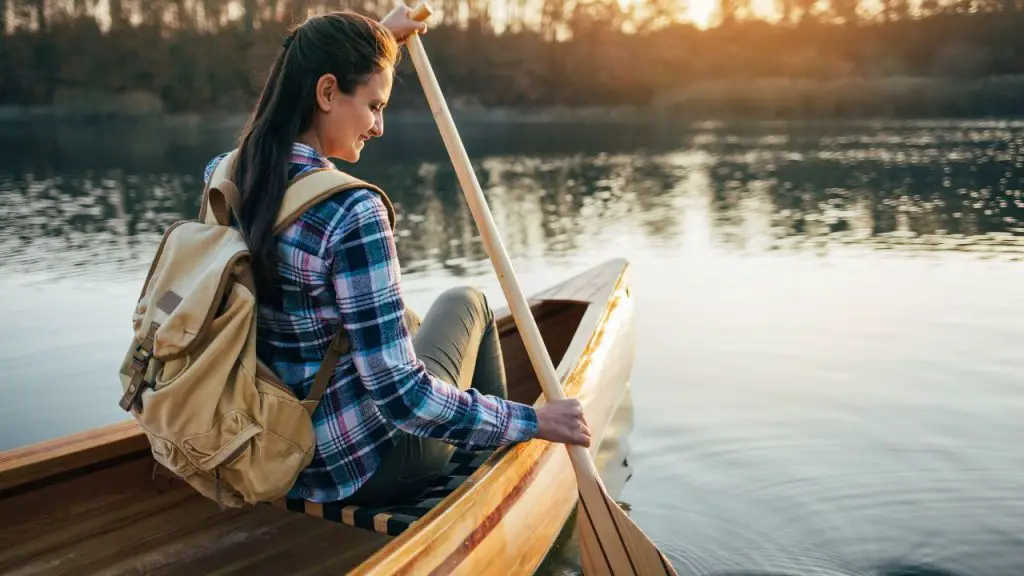
However, try to install canoe seats with a backrest to maximize comfort. This way, your back, and bottoms have adequate support.
Many backrest-equipped canoe seats can accommodate gel and foam seat cushions to make it even more comfortable for longer.
Adjustments to Your Clothing
If you are going to be paddling for extended periods of time, it is important to make sure that your clothing does not rub against the canoe seat.
Wearing loose-fitting clothing can help to prevent this problem. If you must wear tight-fitting clothing, try to layer it so that there is a layer of fabric between your skin and the canoe seat.
First, try wearing a pair of shorts or light-weight pants that dry quickly. This will help to keep you cool and comfortable during summer paddling trips.
Second, consider investing in a pair of lightweight and breathable water shoes. These shoes will help to keep your feet dry and comfortable while paddling.
Finally, always dress in layers so that you can adjust your clothing as needed to stay comfortable throughout the day.
A padding material such as a towel or foam pad can also help to make your canoe seat more comfortable.
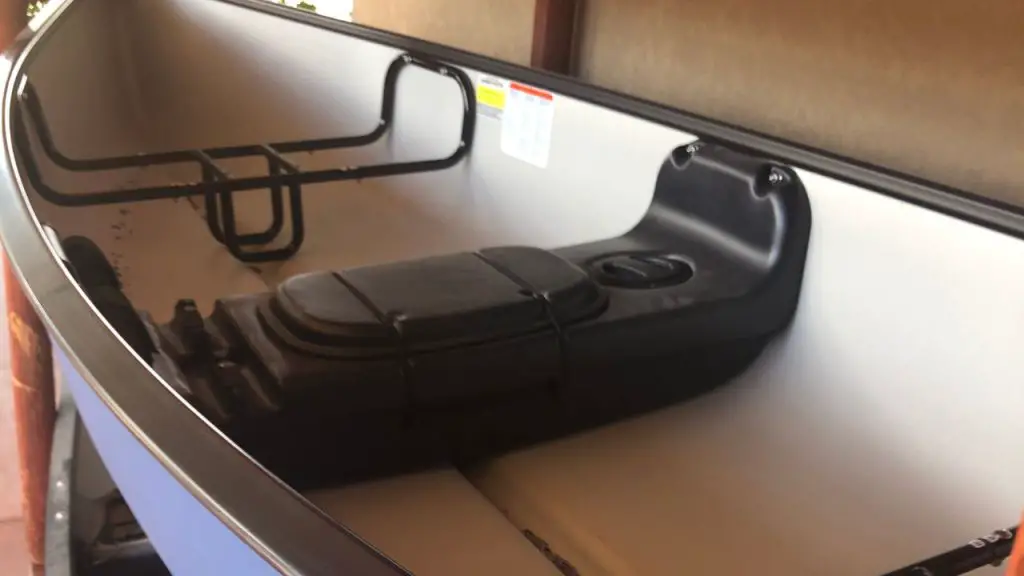
By placing a padding material between your body and the canoe seat, you can reduce the amount of friction that occurs. This will help to prevent soreness and discomfort.
Add Foam Mats for Extra Leg Comfort
Leg comfort is also crucial to long-haul canoe trips as the intense, repetitive pressure applied on your legs by each stroke can cause knee and ankle pains. Adding foam mats can significantly reduce this as it absorbs more of the trauma.
It also prevents your feet from slipping. This makes foam mats not only a necessary accessory for comfort but stability as well.
Adjustments to Your Paddling Posture
Proper paddling posture and position are also keys to a comfortable canoeing session. You can have all the best canoe seats and cushions, but a lousy paddling form can easily cause pain too.
Generally, the stronger and more experienced paddler should sit at the stern in tandem canoes. However, if there’s a significant weight difference, it may be wiser for the heavier person to sit there even if they are not as experienced.
Having the stern take the weight means the canoe will be more balanced as it moves forward across the water.
Comfort on a canoe also depends greatly on how a paddler chooses to sit. Some canoeists prefer the built-in seats, while others prefer to kneel as it lowers their center of gravity which adds significantly to the canoe’s stability.
In especially turbulent waters, therefore, kneeling is the best choice.
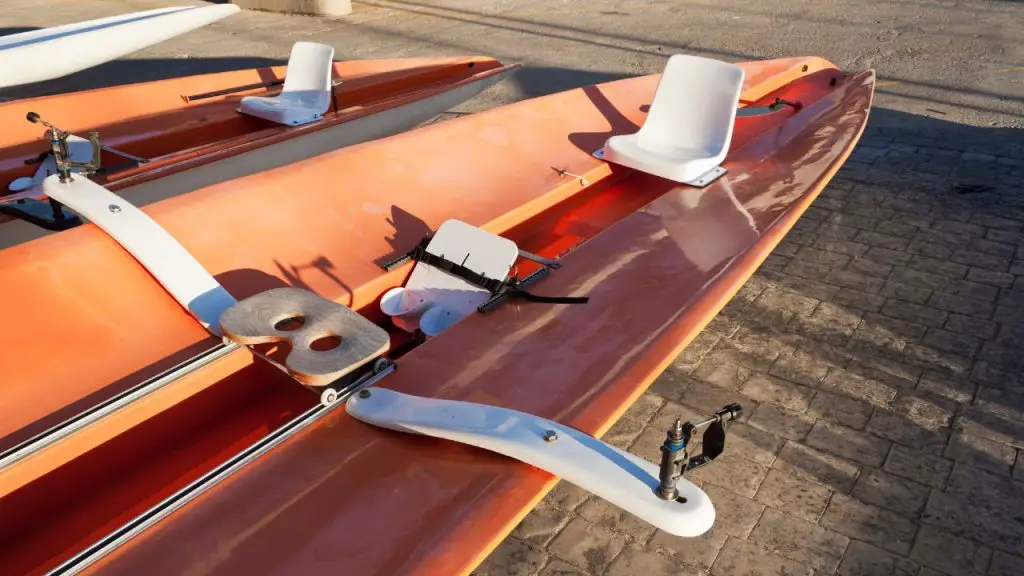
Posture is also an impactful factor when it comes to long-term comfort on the canoe. It is recommended for canoeists to sit up with a relaxed straight back whether they’re sitting or kneeling.
This posture allows the paddler to exert maximum power for each stroke without causing much pressure on the back.
Ensure Proper Technique While Sitting And Paddling
Refining your paddling technique can also help you improve your overall comfort on your canoe. With good form, you can distribute the stress on your muscles while paddling more efficiently.
One of the most critical parts of a good technique, paddling with a straight but relaxed back, has already been discussed.
However, to make paddlers more efficient and powerful, it’s vital to engage the core muscles with good torso rotation with each stroke rather than just pulling with your arms.
This effectively distributes the workload between your arms and your core. In addition, this prevents unnecessary fatigue and wears on your triceps.
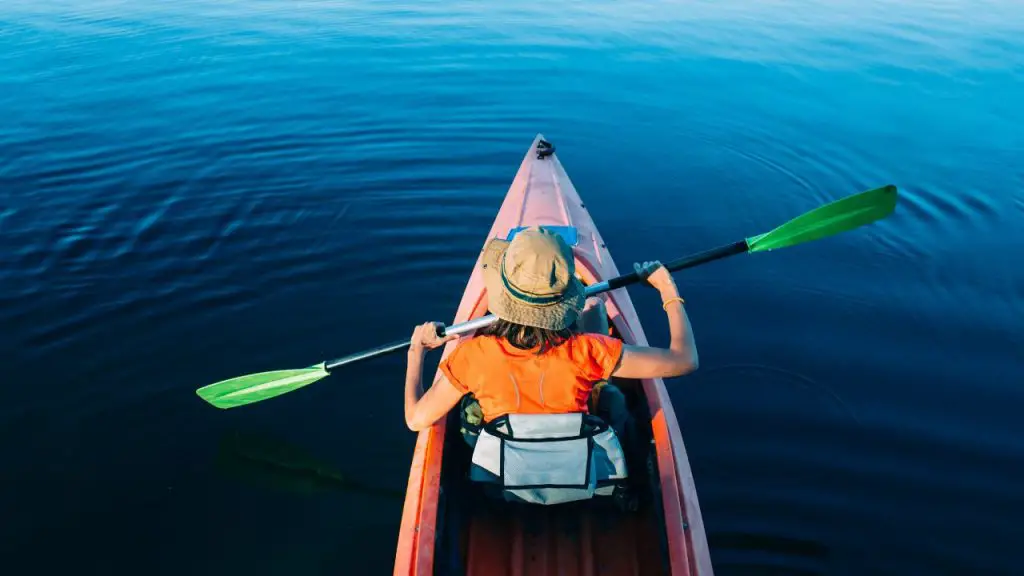
DIY a Custom Cushion For Your Canoe
Before spending money on a new canoe seat, you may want to try to make your canoe more comfortable by adding a customized cushion first. This way, you won’t have to spend more money on an expensive canoe.
You can use any old pillow or cushion you have around the house. Just wrap it in a waterproof fabric, and you’re good to go. In many cases, this can already significantly improve a canoeist’s comfort.
Top 4 Recommendations for Your Canoe
A DIY cushion can only go so far, especially if your problem is with your back. So, we’ve compiled a list for you of the top canoe seats on the market.
Skwoosh Kayak Gel Pad for Kayaks, Canoes
While you can easily make your own cushion from old pillows, keeping it from sliding off your canoe seat may be difficult.
Skwoosh Kaya Gel Pads are inexpensive alternatives that can help you immediately improve your comfort on the canoe without needing a lot of extra work just to set it up.
Just lay it on your canoe seat or your canoe’s floor if you choose to kneel. Its patented lightweight pressure-relieving fluidized gel lets you paddle longer in comfort
And since it’s a gel, there won’t skidding won’t be a problem to making for a more stable paddling experience.
GCI Outdoor SitBacker Adjustable Canoe Seat with Back Support
If a simple cushion doesn’t improve your comfort, perhaps the GCI Outdoor SitBacker canoe seat with a lumbar cushion-equipped backrest is what your back is clamoring for.
It’s a versatile canoe seat that straps onto any existing canoe bench. In addition, its foldable design makes it easy to transport.
However, its primary selling point is that its BackComfort Technology allows it to recline the backrest so you can relax in the middle of the trip.
GCI Outdoor Big Comfort Wide Stadium Chair with Adjustable Backrest
Primarily, the GCI Outdoor Big Comfort was designed as a stadium chair meant to improve the experience on sports stadium benches and bleachers.
However, its design can easily be adapted to be used on the water by strapping it onto any canoe bench. Its main feature is that it has legs, so you can use it even when not on the canoe or strapped onto a bench.
ALPS Mountaineering Weekender Seat
A backrest often means that a seat has to have some sort of skeleton to prop it up, making it a bit heavier and bulkier than seats without them.
The ALPS Mountaineering Weekender Seat is an engineering marvel because it has minimal support making it one of the lightest canoe seats with backrests on the market.
The webbing straps at the bottom of this seat make it easy to attach to any canoe bench. There is also a mesh pocket that’s perfect for magazines or drinks.
FAQs
How do you sit comfortably in a canoe?
Whether the circumstances require you to kneel or sit on your canoe, a straight and relaxed back is always the best way to sit comfortably in a canoe.
How can I make my kayak seat more comfortable?
Kayak seats can be made more comfortable by adding a cushion or a seat with a backrest.
Where should the heavier person sit in a canoe?
In a two-person canoe, the general rule is for the more experienced canoeist to sit in the stern.
However, if the weight difference is significant, having the heavier person at the stern is the most prudent seating arrangement.
Do you sit on the seat of a canoe?
In many cases, the seat of a canoe is the best place to sit. This is because they’re typically designed to balance comfort, stability, and efficiency.
Should you kneel in a canoe?
There are times when kneeling is the best position, especially for more experienced paddlers.
Turbulent waters, for example, require a more stable position that only kneeling can give.
Why ado you heel a canoe?
Heeling a canoe can also improve the handling, stability, and comfort of a canoe. Firstly, the change in the water line makes a heeled boat track straighter.
Secondly, since paddlers are closer to the water, each stroke can be longer, making the canoe pick up speed much easier.
This enables to paddler to put less power on each stroke, making canoeing much less impactful on the joints and muscles.
Conclusion
Canoeing is a fun activity that everyone in the family can enjoy. However, some canoe seats can cause pains and aches, especially if you don’t have the right gear or a refined paddle stroke. Luckily, there are ways to make it more comfortable.
With training, you can adopt a variety of positions on the boat to prevent muscle and joint fatigue. And if that doesn’t work, consider adding a cushion or upgrading your seats.
Not only will this make the ride more pleasant, but it can also help prevent back and buttocks pain. So get out on the water and enjoy the summer sun – in comfort!




